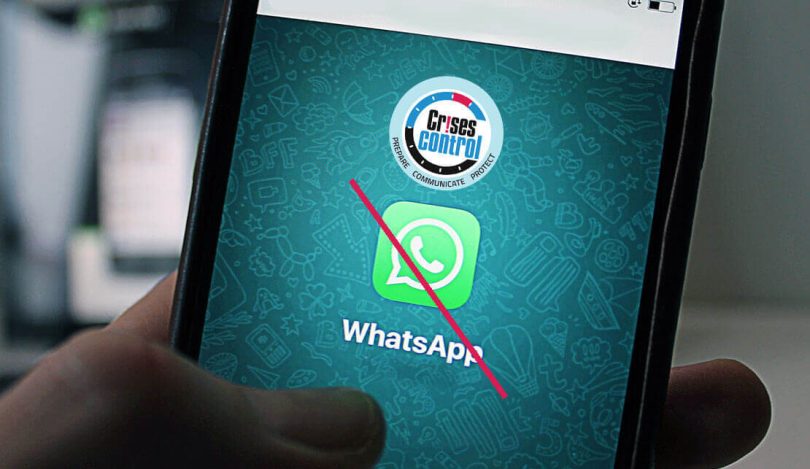Every organisation, no matter their size, should have a plan for communicating with their employees in an emergency. While many organisations use WhatsApp for their everyday communications, there are many reasons why using WhatsApp for emergency communications isn’t going to work.
We get why organisations use WhatsApp. It’s free, familiar, quick and easy to use, and versatile, easily accommodating an office wide chat, or a quick message asking an employee an important question on the fly. However WhatsApp is limited, and those limitations mean that WhatsApp is not fit for purpose as an emergency communications tool, or even an intra-office chat tool.
WhatsApp is not an emergency communication system
WhatsApp may be many things, but it is not designed as an emergency communication system. It lacks many of the features that you need not just in the heat of a crisis, but also when planning for that crisis.
We don’t need to go into detail about the controversy caused by the recent WhatsApp privacy policy update, but it came as a timely reminder that WhatsApp’s (read Facebook’s) record on data protection is less than stellar. Predating the scope of the latest privacy policy update, WhatsApp already shares the names and members of group chats (just not the content of the chats) with Facebook. WhatsApp is also one of the most hacked chat apps, making it an insecure option for your business chat – whether it is day to day mundanity, or real time emergency communications.
Between personal and work chats, employees may constantly receive and send messages via WhatsApp, but they have no way or organising them between different uses. As a result some messages get lost, not what you want when you need to get hold of an employee in a hurry.
In addition, many employees are uncomfortable using what is essentially a personal app for work purposes, and while they may grudgingly use it during work hours, out of hours they may well ignore all work related messages. As we know, emergencies can happen any time, not just in work hours. You need to make sure that your employees know that if you are messaging them out of hours it is vital that they respond.
Using WhatsApp for emergency communications could let you down
In the heat of an emergency, using WhatsApp for emergency communications simply won’t work. For one thing, WhatsApp needs a reliable internet connection to work. Commercial networks can get easily overwhelmed in a crisis situation, and fail, leaving you unable to get hold of critical people at critical moments.
WhatsApp doesn’t have a tablet version. If you use tablets for emergency situations, there is no way to tie in communications with other data on the scene. It is also limited when it comes to real time data, for example you can’t see who has seen an emergency message, and there are no geolocation tags to help you know where critical people are.
Crisis management requires a lot of organisation before, during, and after an emergency. Groups need to be clearly defined, and it is crucial that you can add and remove members from important groups easily and quickly, to ensure that the right people get the right messages, at the right time.
Preparing for emergency communications the right way
Instead of using WhatsApp for emergency communications, consider a crisis communications platform. A good crisis communications platform is packed full of features that can help you improve organisational communications not just in an emergency, but also every day.
First up, it allows mass notifications to a limitless number of users that can be easily utilised for daily communications. These mass notifications can be scheduled ahead of time, or sent on the fly and they are guaranteed to be delivered globally within seconds. The system will also offer options for you to receive read-receipts, and see who has responded in real time. Notifications can be sent via push message, email, SMS, phone call, and web alerts, ensuring that everyone gets the message.
An emergency communications tool makes it easier to control the messages being delivered. As it is vital that every employee is included in emergency communications, contact management is made simple. It is easy to add or remove employees as they join or leave, and moving them between groups is also controlled. Groups can be created, and messaging can be personalised to each group.
In the event of an emergency, that crisis communications platform won’t let you down. Employees can be alerted automatically, and their responses tracked to ensure that they have got the message, are safe and well, or need help. First response teams can communicate with each other in real time by whichever channel is available to them, and all communications can be tracked to give you the relevant data and progress reports.
Your crisis communications platform may well save lives. It’s never too soon to get your teams used to working with it on a regular basis. People tend to ignore or not use something if they aren’t comfortable with it. By using your crisis communications tool as a dedicated office communications app that everyone is used to using, you break down that barrier, and get them communicating better in an emergency.







